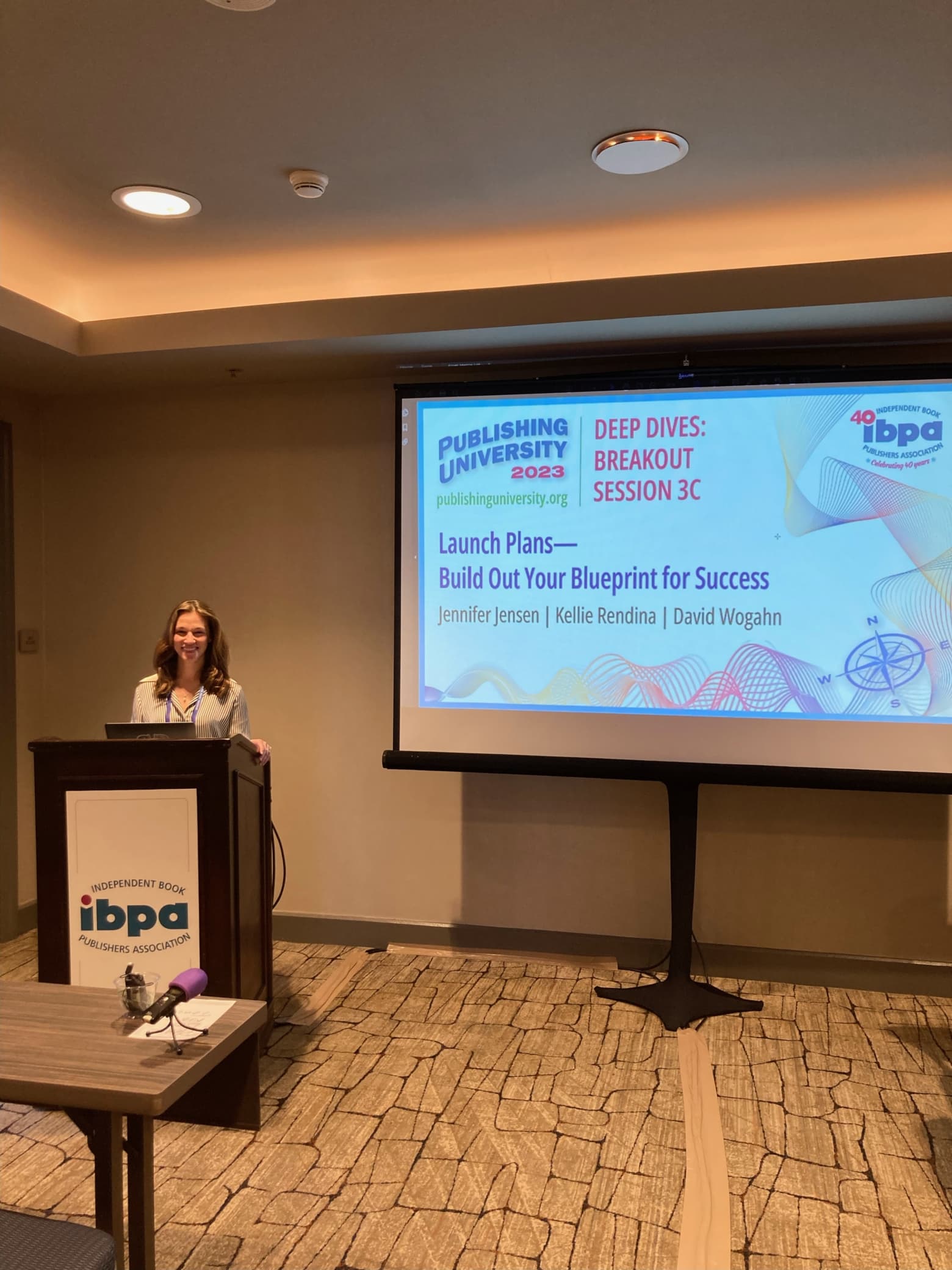How Thought Leaders Make Money and Build Their Business Through Speaking
By Peter Winick
If you ask new nonfiction authors what they’d like to do once they get their book published, many (nearly 80%) will say, keynote speaking. There’s something alluring and sexy about being a keynote speaker: The travel, the relatively high fees one expects to charge, the thrill of sharing your work and being onstage. The list is quite long.
Many authors don’t have a strategy in place that will increase their odds of achieving their goals. That’s a big mistake. You must have a strategy and not fall into the tactical trap that far too many authors do. Activity and productivity are not the same thing. Be effective, not busy for the sake of being busy.
Here’s the reality: The business side of speaking is not easy. There’s a very low barrier to entry and it seems as if everyone lately fancies themselves a speaker.
So how can you make money and build your business through speaking?
First, it’s a business. A big business! According to Marketdata, LLC, the motivational speakers’ market in the U.S. generated an estimated $1.9 billion in revenues in 2019. Marketdata analysts project that the value of the professional speaking industry will grow at a 4.1% average annual pace, reaching $2.30 billion by 2025—and that only counts the speaking opportunities that generate a fee for the speaker.
You’ll need to understand how the market works. There are dozens – if not hundreds – of speaking bureaus, yet they control less of the market today than they did just 5 years ago. They’re important but you can’t rely solely on them to generate leads and interest for you. You’ll need to optimize your collateral and website so that it showcases your skills.
What are you bringing to this very crowded and competitive marketplace that is new and unique? Study the competition, learn from others, and master your craft! You need to put in the work to succeed as a speaker.
Next – and I think this is the critical piece often overlooked by far too many – you need to have clear cut goals and objectives in place. What is it you’d like to accomplish as a speaker? Is it revenue? Is it a way to acquire new clients? Is it to evangelize the message in your book? There are no right or wrong goals, however, it is wrong to not put the effort into figuring out what they are for you.
For example, many speakers think the goal of being a speaker is to speak more, to generate higher fees and to land more and more lucrative gigs. That might be so for many, but in my experience, there are two types of speakers: The first type is early on in their journey, and they want to deliver as many keynotes per year as is humanly possible. The second group has been delivering keynotes for a fair number of years and actually want to deliver less. Now why would that be? Well the travel gets old, and the locales aren’t always exotic and there’s a loneliness and a bit of monotony to it.
It is a very transactional business. Book the gig, fly in, deliver, enjoy the applause, fly to the next gig. Lather, rinse, repeat.
The savviest speakers I’ve seen and worked with take a bit of a different approach. First and foremost, they view a speaking event as the beginning of a long and fruitful relationship with a client. In order to take that view they must have a suite of product offerings and solutions that the client organization wants and are willing to pay for. That might include webinars, online learning series, train the trainer programs, licensing of your intellectual property, assessment tools, the diagnostic list is almost endless. You have to have a client journey mapped out so that the keynote can be a paid business development tool for you. It can’t be a sales pitch or an infomercial, but you can very thoughtfully make the case for how your work can impact more people (perhaps thousands or tens of thousands) at the client organization.
You’ll need to make sure that you have tools and processes in place to support you, this will not happen by accident. Waiting for a handful of audience members to give you their card after you speak is great, but it’s reactive and not effective for the most part.
Now that you have a suite of offerings that you developed to serve your target market, you need to research where they are. Don’t exclude non paid speaking events simply because they don’t pay speakers. In fact, these can be easier to get and more lucrative than a paid speaking event. If your goals are to acquire clients and have more and more people exposed to your work in more formats and modalities, this opens up the market exponentially for you.
Another thing to consider, and a fairly easy way to differentiate yourself, is to be obsessive about serving your clients. Too many speakers develop a reputation of being “prima donnas” and not being easy to work with. I doubt it’s intentional but demanding first class travel and hotel suites won’t score you points. Instead, engage the client frequently. Make sure you understand what success looks like for them and see how you can go above and beyond what you’re contracted to do to make them a success. A meet and greet with their clients or sponsors before the event? Why not? Creating some short videos before the event to help them promote it? Great idea. How about a short video recapping your speech that they can send to participants a week or so after the event? Don’t lower your fee but give more to develop those long-term relationships.
Peter Winick is the founder and CEO of Thought Leadership Leverage. For the past two decades he has helped individuals and organizations build and grow revenue streams through designing and growing their thought leadership platforms as well as acting as a guide and advisor for increasing business to business sales of thought leadership products. His clients come from a diverse set of backgrounds and specialties. They include New York Times bestselling business book authors, members of the Speakers’ Hall of Fame, recipients of the Thinkers50 award, CEOs of public and privately held companies, and academics at prestigious institutions such as Yale, Wharton, Dartmouth, and London School of Business. Peter has built his career and Thought Leadership Leverage to serve the needs of these individuals and others like them. Specifically he uses his entrepreneurial experience and spirit along with a passion for using relationships to leverage growth to help: CEOs, business owners, and internal practice leaders looking to grow revenue, revitalize marketing, and improve customer experience through applying the principles of thought leadership; Other business leaders and experts seeking to build out their ideas into a platform so they can launch content and products to create a lasting impact in various companies around the globe; and, “Traditional” thought leaders who want to build or grow their practice, increase their effectiveness in content creation and marketing as well as extend their reach into existing and new clients. Peter uses a combination of art, science, logic, focus, passion, and creativity to transform a thought leader’s great ideas into a platform and practice so they can effectively reach business leaders and executives to serve them the tools they and their organizations need.
